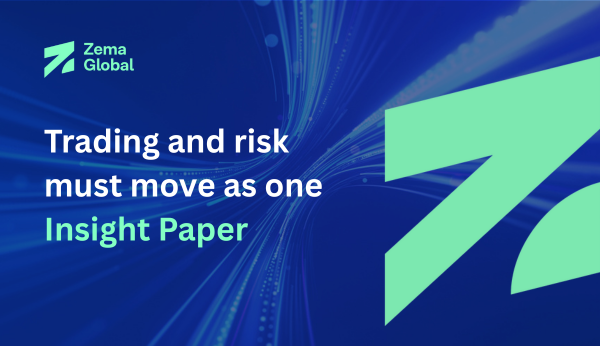Trading and risk must move as one
Trading in today’s energy markets
Trading conditions have shifted in recent years. Over the past year, traders have observed the market change to one defined by greater competition and a race towards energy security.
For front office decision-makers, this has been made even more impactful by increasing policy and geopolitical swings. As a result, portfolio choices, such as asset acquisitions, divestments and strategy pivots, now need to be evaluated against a moving backdrop of tariffs and market rule changes.
Looking beyond geopolitics, market structures have become hugely dynamic. Deregulation and financial innovation have expanded traditionally end-of-day markets into intraday, complex operations. Global linkages, such as LNG flows, have increased correlations between local and international prices.
These market conditions raise the bar for traders. They must show total confidence in portfolio analysis across hours, weeks and months. With the right understanding of today’s dynamic energy market – one defined by greater competition, geopolitical shifts, and increasing global correlations – strategies can be executed with confidence.
The challenge for traders, now, will be executing quality decisions, even as markets continue to change at a rapid pace.
Risk: what has changed and why it matters
Risk profiles have reconfigured alongside these trading shifts.
Price formation has become more volatile as market dynamics have moved. Power has become increasingly interdependent with other commodities, such as fuels and metals. Counterparty and operational risk have risen with the advent of faster clearing cycles. Simply put, today’s market plumbing is more complex than ever. And with greater complexity comes greater risk.
Data and analytics risk, in particular, now sits alongside market risk as a first-order concern. Firms are battling to manage their risk against a rising tide of low-quality yet high-volume data.
Elsewhere, risk management systems designed for legacy day-ahead models now must keep up with real time signals and uncertainty across interdependent commodities.
In practical terms, this means risk and trading must now assess correlated risks across the portfolio during the day, not after it. With intraday volatility creating rapid swings, trading and risk must learn to move as one, lest they face avoidable losses.
Why trading and risk must move in tandem
Legacy end-of-day risk models are now incompatible with today’s high-volume, high-pace trading.
As energy markets grow increasingly volatile, trading volumes spike. Simply put, traders cannot afford to miss out on leveraging volatility in the energy markets. As a result, trading operates at a faster velocity with more complexity, while many risk functions remain anchored to end-of-day or end-of-month cycles.
The result is a visibility gap precisely where both sides need a single, current view. Thus, trading and risk need to operate in tandem. This will ensure that the systems tracking and managing positions from a risk point-of-view can keep pace with trading execution.
The two central concepts here are velocity and reliability. To support trading and risk moving in tandem, the speed of insight moving from trader to risk manager must be increased – all without diminishing the explainability required by boards and regulators.
To achieve this, firms need robust data, and robust decisioning infrastructure to support it.
How to achieve this? Robust data and governance
More data itself cannot solely support this. Firms are increasingly moving towards data lakes; central repositories that store raw data. But this greater amount of data does not independently support decision-making.
The true remedy is sensibly governed data. This means embedded organizational know-how, platforms that people actually use, and workflow automation so teams can ‘set it and forget it’. These are the real keys to aligning risk and trading by using robust data.
When traders and risk managers can trust they are using the right data at the right time, they can move faster with confidence. Astute governance can convert data-rich-but-insight-poor systems into consistent decision-making.
Critically, governed analytical curves reduce risk. Consistent inputs and well-understood curves can prevent assumptions bleeding into decision-making.
Practical, judicious AI usage
To ensure data can be relied upon, AI should be embedded judiciously. Data quality control is one area where this is particularly helpful for firms aligning trading and risk to better manage market dynamics.
Trust-worthy machine checks can shorten the path from question to decision. These AI building blocks can be used to operationalize governed data and portfolio analytics, not to simply add another black box.
Execution starts with the right data and the right curves. The objective is to get teams active quickly, with portfolio analytics aligned to current market microstructure. Robust AI infrastructure can go a long way to helping traders and risk managers achieve this.
Operate at market speed, with discipline
The world will not slow down. Velocity, policy movement, and shocks will persist. The operating choices are clear. Govern the data, embed the know-how, and ultimately align trading with risk in real time.
By doing so, firms can replace sporadic heroics with consistent, explainable decisions at market speed, using quality-assured data, governed curves and an AI-enabled workflow to bring together trading and risk, and shrink the journey from question to decision.

